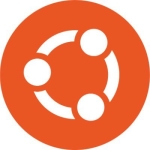What is our primary use case?
I worked with different organizations. So, the use case varies from organization to organization. Right now, some of the teams are using it for applications like BI, and then there are a few others that are using it for Websphere, middleware, etc.
In terms of the version, most of them are on 7.9, but there are a few on 8.2 and 8.4 as well.
How has it helped my organization?
It enables us to achieve security compliance. Our security team is quite happy, especially in terms of patching up our servers, etc. It's compliant with our security requirements. With Windows updates, sometimes, there could be errors and the blue screen issue, and it could become hectic for the applications as well. Our security teams struggled a bit to update Windows, but when it comes to Linux, they are quite comfortable because they know that things will go smoothly.
What is most valuable?
I'm quite new to this organization, but I know that there has been improvement in terms of performance. We're using Red Hat Linux on Power Systems, which is quite different from the Intel platform. So, admins are much happier, and they are using it quite well now. Previously, we were using Windows for our applications, but now, we have made Linux mandatory for being open source and not bound to Windows. Things can be complicated on Windows. Especially when we're installing it, there are a lot of things, such as registries, but Linux is easier for admins. There is DVS as well.
When I worked in the banking sector, the most important part was user administration where you need to keep things under control for a specific user. The auditor usually looks for an agent or something like that, and it has been quite easy to manage things from that perspective. Things are more manageable now than in the past.
What needs improvement?
Windows operating system is used everywhere. You will find it everywhere, and every user is able to use Windows. If a user is using an operating system from the start, it becomes easier for them to use it when they come to a professional environment. That's an area in which I believe they need to put in extra effort, especially for the students. Currently, for their final projects, most students use Windows, and this is an area where Red Hat needs to put in an effort. They need to give some training to the students so that when they come to the professional environment, they're already used to it. It would then become easier for them to use it in a professional environment.
I'm also using IBM AIX, which supports a tool called Smitty. You just put Smitty, and you can do anything. At the backend, the command will run automatically. It is not exactly like a GUI, but you just give the input and it will give you the output. That is something that Red Hat should work on. That would be an added advantage with Red Hat.
For how long have I used the solution?
It has been 12 or 13 years.
What do I think about the stability of the solution?
What do I think about the scalability of the solution?
We are mostly using VMware and Power Systems. Scalability-wise, they are always the best. We can upgrade to get all the resources on the fly. We never faced any issues. However, if you didn't add the required parameters on your profile on VMware or the Power System, then there is an issue, but that's not related to the OS. That's related to virtualization.
Application-wise, there are multiple teams that are using these systems. We have the database team, the middleware team, the MQ team, etc. There are also system admins. The system admins are the ones who are deploying it, but the owners of the system are different.
We have plans to increase its usage. Two years ago, we had only 60 or 70 servers of Red Hat, but now, we have 400 to 500 servers. Its usage is always increasing. After a year or two, we might end up with about 1000 servers.
How are customer service and support?
We have contacted them a few times. We did ask the support team to get in when the cluster got stuck and let us know what's the issue and what's the solution. Whenever I have asked for support, they have provided the best support. I always count them as the best. We have never faced an issue with them. I would rate them a 10 out of 10.
How would you rate customer service and support?
Which solution did I use previously and why did I switch?
We had Windows. The stability was the reason for switching to Red Hat. The stability of Windows varies, but Linux is quite stable now. That was the main part they were looking for.
We are very comfortable with using Linux. We have been using it for 10 to 15 years, and we can't switch to Windows. We can't use Windows even on our laptops. We are not used to using a mouse and GUI. The command prompt is much better for us.
We also use AIX because we have AIX infrastructure, but a few of the applications don't work on AIX, whereas they work with Red Hat Linux. That gives Linux an advantage. So, we use Linux on Power Systems, rather than AIX.
How was the initial setup?
We have been working with different operating systems, and we also know most of the technical requirements, so it is easy for us. Usually, the OS installation takes a maximum of 25 minutes. If you are making extra file systems, such as for Oracle, it takes 10 to 15 minutes extra. A desktop or a single file system doesn't require much time. We already have scripts. We just run the scripts and everything is done by the scripts. Previously, it used to take two or three hours, but now, things have changed, and we're making life easier.
What about the implementation team?
We deploy it ourselves. We don't ask other vendors to deploy it for us. In terms of maintenance, we have already been updating our maintenance contracts, especially the support contract. There are some old systems running in our environment, and we are in the process of upgrading those from version 6.9. We already have the required support.
There are four people on the team, but for Linux especially, there are only two people. We're easily managing 500 to 600 servers for Red Hat.
What's my experience with pricing, setup cost, and licensing?
When you are running your infrastructure on this, you can always find some discounts with local support, etc. There are always some discounts to match your budget. It is definitely affordable.
When it comes to virtualization, there are different factors. There is not only Red Hat. There is also IBM, VMware, etc. The third-party vendors always manage to come up with a good offer. Our company can't say no to that, and it works out fine.
We also have IBM AIX, and when you compare these two, there's a huge difference because IBM AIX's support is quite higher than Red Hat's.
What other advice do I have?
To anyone interested in using Red Hat for the first time, I would definitely advise starting with the GUI because now, the GUI option is quite good, and you can do all the things. After that, you can slowly start moving to CMD. For learning, there are a lot of resources available online, such as YouTube and LinkedIn Learning, whereas Red Hat Academy is quite expensive.
The biggest lesson I have learned from using this solution is that when you're using the command line, you need to be extra careful. That's because when using the command line, a single slash can make a huge difference. That's what I learned at the start of my career.
I started with Red Hat Version 5. Now they have version 9, which I haven't used, but if I just consider the evolution from version 5 to 8, 8.2, or 8.4, there has been a huge difference because, at that time, people were scared of using Linux, but now, things are different. There has been a revolution in terms of OS. A lot of things are being changed, but in terms of the things that we do, for us, it is the same because we are doing system administration. As a system admin, there is nothing different for us. We are doing the same things again and again because the applications require the addition of storage.
There is also a change in terms of security features. If I compare the old versions with the new versions, in old versions, adding any exception in the host firewall was a real task, but now, things have either become smooth, or we have gotten used to it. Overall, for me, things have become easier. They are getting more and more secure, but with the vulnerabilities and the assessments that have been done, we need to keep updating. Now, everything has caught up with the latest security required in the market.
In our environment, we're using virtual servers. There are no physical ones. We are shifting to containers in my current organization. Most of the applications we are using are containerized, and it has been easy for us to manage those applications. However, we also require some in-built applications, and for that, a change in people's mindset is required. It's not about the OS; it's about the people who do the development. It is becoming a bit hard for them because they were using a different platform previously, and now, they need to move to the Linux platform. It is a little bit different for them.
Overall, I would rate it an eight out of ten. When comparing it with AIX, AIX is a bit easier in terms of use and it also has the Smitty tool.
Which deployment model are you using for this solution?
On-premises
Disclosure: I am a real user, and this review is based on my own experience and opinions.

















